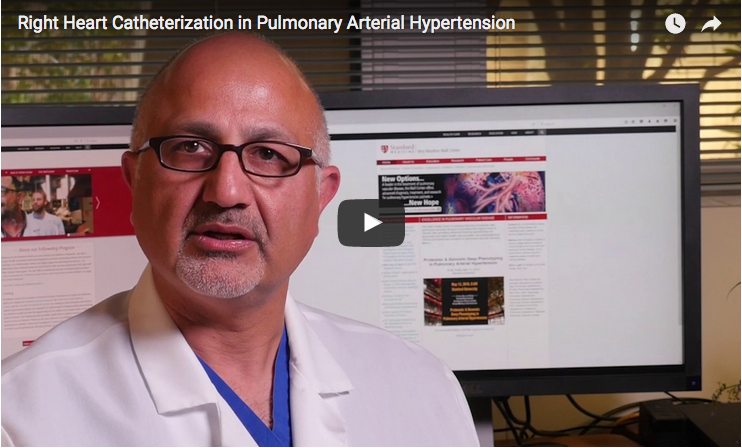Explaining Right Heart Catheterization in PAH

Shortness of breath, fatigue, dizziness, fainting, chest pain, swelling in your ankles or legs: if you’re visiting your doctor for a handful of symptoms similar to these, they’re likely to send you for a diagnostic test called right heart catheterization.
What is right heart catheterization? In this seven-minute video, Dr. Roham Zamanian from Stanford Medicine explains exactly what to expect from this diagnostic out-patient procedure.
How is pulmonary hypertension diagnosed? Find out more here.
Already have a right heart catheterization procedure scheduled? If so, your doctor suspects you have pulmonary hypertension (PH). This is an educated assessment of your symptoms that will be validated by the results of a right heart catheterization. The procedure is considered the gold standard for pulmonary hypertension diagnosis.
Heading into the hospital for even an out-patient procedure can seem daunting. If you’re concerned, be sure to watch this video. In these seven minutes, Dr. Zamanian will talk you through the experience. From how to prepare to exactly what will happen during the procedure to exactly which add-on tests your trained physician may deem necessary.
In just 30 to 45 minutes, right heart catheterization will provide you and your doctor with the information needed to treat your symptoms effectively.
Here are eight pulmonary hypertension red flags you should know about.
Pulmonary Hypertension News is strictly a news and information website about the disease. It does not provide medical advice, diagnosis or treatment. This content is not intended to be a substitute for professional medical advice, diagnosis, or treatment. Always seek the advice of your physician or other qualified health provider with any questions you may have regarding a medical condition. Never disregard professional medical advice or delay in seeking it because of something you have read on this website.







